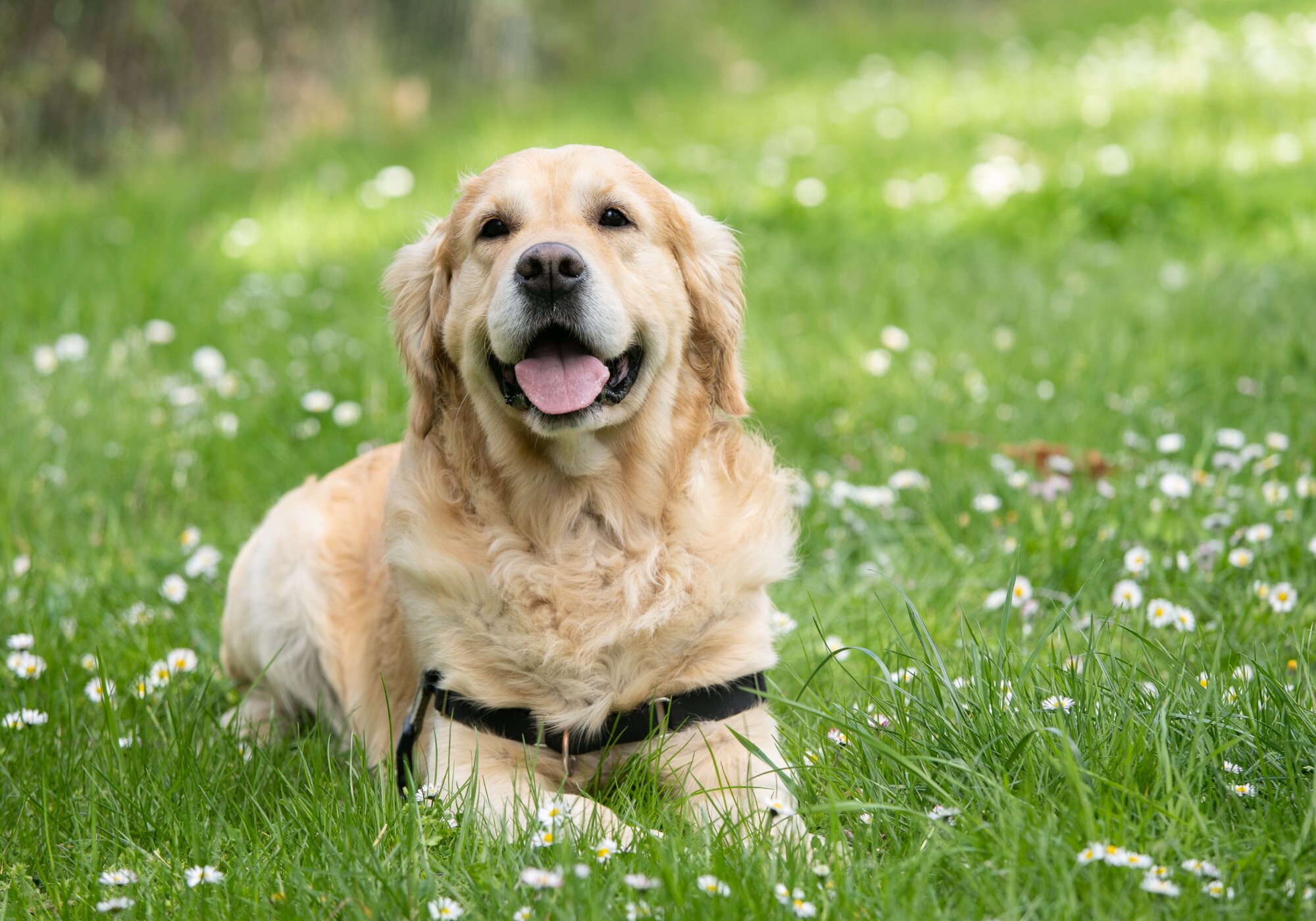Staying active with your dog is a fun part of being a pet parent. But, there are degenerative diseases that can affect some dogs’ ability to exercise and play.
One of these diseases is hip dysplasia. Hip dysplasia occurs when your dog's pelvic or thigh bone and ball and socket joint don't fit together. When your dog's thigh or pelvic bone grows faster than the joint it causes hip dysplasia.
Choosing the right treatment plan for your pet can be overwhelming. But, there are some steps you can take to better understand your pet's condition.
In this article, we'll cover:
- Choosing the right hip dysplasia treatment
- The best options to treat hip dysplasia in dogs
- The truth about managing hip dysplasia

Choosing the right dog hip dysplasia treatment

Picking the right treatment depends on your pet’s age, breed, size, and case. After you know more about the severity of your pet’s condition, you can better determine how to treat it. And, what you’ll need to manage it.
Here are six things you should know to choose the right hip dysplasia treatment:
1. Anatomy of your dog's hip joint.

Each of your dog’s hind legs has a ball and socket joint. The ball is the head of your dog’s femur bone. The socket hip joint is where your dog’s femoral head nests into their hip bone.
When a dog has hip dysplasia, their ball and socket joints don’t work the right way. This can cause lots of pain in your dog’s joints.
2. Causes of canine hip dysplasia.

Hip dysplasia is a typically hereditary disease found in dogs. But, there are other ways your dog can develop hip dysplasia.
The most common ways are:
- Quick, excessive growth
- Improper weight or muscle mass
- Poor or unbalanced nutrition
- Too much or too little exercise
- Osteoarthritis
- Degenerative joint disease
3. Your pet's breed and genetic history.

Many dogs of different sizes can experience hip dysplasia. But, the dog breeds most likely to develop hip dysplasia are giant and large breed dogs.
Hip dysplasia is commonly found in giant-breed dogs because larger dogs can have excessive growth rate hormones. This causes them to grow faster than smaller breeds.
The most common giant and large breed dogs with a genetic predisposition of hip dysplasia include:
- German Shepherds
- Labrador Retrievers
- Great Danes
- Golden Retrievers
- Saint Bernards
- Newfoundlands
If you are considering a large breed dog or a giant breed dog, know that hip and joint issues are a likelihood you'll run into. Help prevent hip dysplasia in dogs with a hip and joint supplement.
4. Clinical signs of hip dysplasia.

Diagnosing hip dysplasia can be challenging if you don't recognize your pet's clinical signs. Common clinical signs of hip dysplasia in most dogs include:
- Weakness and hip pain
- Bunny hopping
- Enlargement of shoulder muscle mass
- Lameness
- Decreased activity
Talk to your vet if you recognize clinical signs of canine hip dysplasia. Affected dogs should start treatment as soon as possible.
5. Questions to ask your vet.

If you identify signs of hip dysplasia in your pup, take them to your vet for a physical exam. Before you arrive, come prepared with specific information to provide your vet like:
- Which clinical signs you’ve identified
- Which treatments you’ve tried so far
- How long your dog has had symptoms
- Any genetic history of health problems
If your vet suspects your dog may have mild hip dysplasia, they may suggest x-rays or a physical exam to diagnose your pet. According to the Orthopedic Foundation for Animals (OFA) protocol, x-rays are helpful in diagnosing hip dysplasia in dogs. But, x-rays cannot identify all cases of hip dysplasia.
Your vet can tell you after the physical exam or x-ray if your pet has hip dysplasia or a different joint disease. Depending on your dog's condition, they may suggest specific treatment options.
After your dog’s check-up, be sure to ask your vet these questions:
- How severe is my dog’s condition?
- What treatment plan do you recommend?
- What lifestyle changes do I need to make?
- What are the surgical options?
- What is included in the rehabilitation program after surgery?
6. Be proactive.

Pet parents that stay on top of their pet's health may have an easier time choosing a treatment method for hip dysplasia.
The best thing you can do for your dog is be proactive with their health. If you have a breed that is susceptible to hip and joint issues, make sure you:
- Feed them a healthy diet
- Take them to the vet for check-ups
- Consider a supplement to support their growth

The best options to treat hip dysplasia in dogs

If you are just finding out about your pet’s hip dysplasia, there are things you can do to relieve pain and improve your dog's quality of life.
Treatment options for hip dysplasia in dogs vary from one case to the next. Plus, some treatments can be costly and hard on your dog.
Surgical treatment is often necessary for more serious conditions. But, non-surgical treatments can be just as effective in keeping your dog comfortable and helping with pain relief. No matter what treatment option you choose, you can help improve your pet’s quality of life.
Here are the best options for treating hip dysplasia.
Physical therapy

Physical rehabilitation therapy is a more conservative treatment option for dogs suffering from hip dysplasia. This non-surgical option helps improve your pet’s range of motion and pain through movement.
There are many benefits to trying physical therapy to treat your dog’s hip dysplasia. Some common physical therapy benefits include:
- Weight loss
- Developing lean body weight
- Increased muscle mass in hind legs
- Increases strength and movement
- Decreased pain
- Improved range of motion
Joint supplements

Even if you feed your dog a healthy diet, they may need help getting all the vitamins and minerals they need. Healthy joints start with a healthy diet, and joint supplements can help fill the gaps in your dog’s food nutrients.
When choosing a joint supplement for your dog, consider what the primary vitamins and minerals are. Key ingredients can help slow the degeneration of your dog’s hip joints.
The best supplements should include these ingredients:
- Glucosamine
- Methylsulfonylmethane (MSM)
- Chondroitin Sulfate
- Vitamin C
Plus, you can add supplements to your dog’s diet no matter what treatment plan they are following. That means even if your dog is taking NSAIDs for pain relief they can also have joint supplements to help boost their health.
Nonsteroidal anti-inflammatory drugs (NSAIDs)

NSAIDs and other pain medications are a quick fix that can help relieve your dog’s pain. But, pain meds aren’t a long-term solution to hip dysplasia.
Pain meds are most effective when paired with other treatment plans like therapy or surgery. The most common NSAIDs for dogs with hip and joint pain include:
- Carprofen
- Meloxicam
- Firocoxib
- Deracoxib
- Galliprant
While these pain meds are safe for your pet, they often have side effects like drowsiness, nausea, vomiting, and depression. Talk to your vet about what pain meds are right for your dog’s condition.
Joint fluid modifiers

Dogs with hip dysplasia often benefit from joint fluid modifiers. Modifiers are injections given by a vet that help lubricate your dog’s joints.
This treatment helps with pain management and improves the functionality of your dog’s hips and joints. But, you will need a prescription from a vet to receive this treatment option.
Surgical procedures

Serious cases of hip dysplasia in dogs need surgical procedures to heal. Dog hip dysplasia surgery can be worrisome for pet parents. But, these procedures are safe and can help your pet stay happy and healthy.
JPS
Juvenile pubic symphysiodesis (JPS) is a preventative surgery for very young puppies. JPS helps lessen the chance of young dogs developing arthritis and canine hip dysplasia as they grow and age.
This procedure is best performed at an early age around 14 to 16 weeks. If your pup is a large breed or has a genetic history of poor hip health, JPS surgery is a good option to consider.
Osteotomy or ostectomy
Double or triple pelvic osteotomy (DPO/TPO) surgery is best for young dogs less than 10 months old showing signs of hip dysplasia. This procedure helps improve the function of your dog’s hip joint by cutting into their pelvic bone. This allows for a better range of motion.
In femoral head ostectomy (FHO) surgery, the hip joint is removed and replaced with a false joint. Scar tissue makes up a false joint and reduces discomfort and pain.
FHO surgery does not recreate normal hip function. But, it can help with pain relief.
Total hip replacement surgery (THR)
Total hip replacements are the most effective option for treating hip dysplasia. In total hip replacement surgery, metal and plastic implants replace the damaged joint.
Total hip replacement surgery helps most dogs’ hip function and gets rid of discomfort and pain. Older dogs with hip dysplasia are good candidates for total hip replacement surgery.

The truth about managing hip dysplasia in dogs

If your dog is suffering from hip dysplasia, they may have some limitations. Hip dysplasia limits a dog’s normal hip function. Plus, your dog may not have a normal range of motion or may need help climbing stairs.
You can't stop your pet from getting hip dysplasia. But, there are things you can do to be proactive about your dog’s health.
Stay informed about your pet’s overall health and potential health risks by visiting your vet for regular check-ups. If you know your dog is at risk of developing hip dysplasia, consider alternative therapies like:
1. Massage therapy
As your dog grows up, try adding manual massage therapy to their health regimen. Manual massage can help break up scar tissue, decrease inflammation, and improve flexibility in your dog's hips.
2. Laser therapy
Laser therapy can help keep your dog's hips healthy and strong. Laser therapy works to decrease inflammation and pain in your pet's hip joints. And, it can help you prolong your dog's joint health and limit your dog's risk of hip dysplasia.
3. Limiting exercise
Large breed, active dogs are more at risk of developing hip dysplasia. Exercising your pup is great, but consider limiting intense exercise like jumping and sprinting.
Exercise that involves putting intense weight on your dog's joints can increase their likelihood of developing hip dysplasia. So, opt for less weight-bearing exercise like swimming and walking.
4. Weight management
The heavier your dog is, the more weight and pressure they put on their joints. Excess weight can increase pain associated with hip dysplasia.
Dogs with hip dysplasia should maintain a healthy weight. Overweight dogs may need a weight loss plan if they are too heavy for their breed and size, and to help prevent hip dysplasia.
5. Nutritious food
Feeding your pup a healthy diet can help prolong their hip and joint health. Consider a dog food that has vitamins to help boost your pet’s overall health and keep them strong like:
- Fish oil
- Salmon
- Turmeric
- Sardines
Finding a treatment plan for canine hip dysplasia doesn't have to be stressful. No matter your pet's condition many options will keep your pet healthy and happy. As always, be sure to incorporate flea and tick treatment into your pup's monthly plan.


